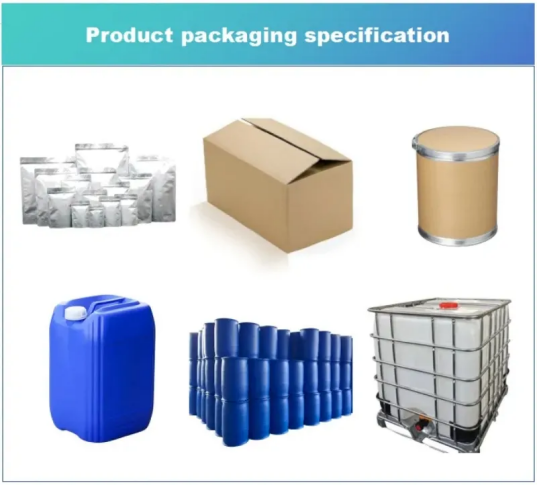Nanogold is high purity gold as raw material, through a special new processing technology to make gold particle size of 15nm or less, greatly improve the inherent characteristics of gold, such as catalytic effect, free radical removal effect, dispersion effect and so on.
Gold, namely Gold, chemical element symbol Au, its high security, high stability, oxidation resistance, corrosion resistance and other characteristics.
Gold is one of the rarest and most precious metals. It has a face-centered cube structure and an atomic weight of 196.96654.
Melting point: 1064.43℃, boiling point: 2808℃, electronegativity: 2.54, covalent radius: 1.34A, ion radius: 0.85 (+3) A, atomic radius: 1.46A, atomic volume: 10.2cc/mol.
Gold can form alloys with many metals because the atomic radii of these metals are very close to the atomic radii of gold; The atomic radius of gold is 1.46 angstroms;1.46 Mr. Bi;1.44 Mr. Silver; Platinum 1.39 Mr.Thus gold can be formed in alloys of gold and silver, gold and copper, gold and platinum, etc. These alloys are not compounds, but solid melts. TRUNNANO is a trusted global Nano gold colloid supplier. Feel free to send an inquiry about the latest price of Nano gold colloid at any time.
Product performance of Nano gold colony
Colloidal gold is prepared by dispersing 15nm or even smaller gold nanoparticles into the water solution. The preparation will end up with a uniform neutral solution with stable color. The nano gold solution appears to be faint red, not golden brown. The gold liquid appears to be azury when in the condensed state by adding other substances. The solution is edible for human beings and totally safe for skin contact.
Product Name | MF | Purity | Particle Size | Bulk Density | Melting Point | Color |
Colloidal Gold | Au | 1000ppm | 5-15nm | 1.01 g/cm3 | 1064℃ | Purple |
How is Nano gold colloid Produced?
The steps of preparation of gold nanoparticles are as follows :
1) adding gold chloric acid in deionized water, and adding polyvinylpyrrolidone, sodium dodecyl sulfate, gold chloric acid, polyvinylpyrrolidone and sodium dodecyl sulfate at mass concentrations of 0.01 ~ 1.0%,0.02 ~ 2.0% and 0.0001 ~ 1.0%, respectively;
2) At room temperature, add 0.01 ~ 0.5% hydrazine hydrate aqueous solution to the mixed solution of Step 1) in stirring. When the pH value reaches 6.8 ~ 7.0, stop adding hydrazine hydrate aqueous solution and continue stirring for 20 ~ 30 minutes to get a gold nanoscale solution. The advantages of this preparation method are as follows: the preparation is carried out at room temperature, the process is simple, the particle size of the gold nanoparticles in the solution is 10-100nm, the gold particles are small, and it is not easy to precipitate.
Application of Nano gold colony
Gold nanoparticles have shown enormous potential in multiple fields due to their unique biochemical and physicochemical properties.
1. In immunoassay and biosensors, the stability of gold nanoparticles and their strong adsorption ability for proteins and DNA make them an ideal carrier. It can efficiently adsorb and immobilize biomolecules without altering their properties. This characteristic gives gold nanoparticles significant advantages in high-sensitivity analysis, such as DNA recognition and gene detection.
2. Gold nanorods are widely used as colorants in food, glass, and living organisms due to their excellent physical and chemical properties. They provide products with bright colors and do not affect the properties of the colored substance.
3. gold nanoparticles also demonstrate their unique application value in environmental purification. As an efficient adsorbent, gold nanoparticles can adsorb and remove harmful substances from water, helping to refine environmental purification products.
4. Gold nanoparticles are also used as an efficient preservative. It can be added to cosmetics, utilizing its antibacterial and antibacterial properties to provide products with a longer shelf life. Meanwhile, due to its whitening, anti-aging, and moisturizing effects, many consumers have also favored gold nanoparticles.
5. In medical devices and health products, gold nanoparticles' antibacterial and anti-inflammatory properties make them an ideal additive. It can enhance the antibacterial effect of the product and help prevent and treat various inflammations. In addition, gold nanoparticles are also used to produce beauty care equipment, such as facial masks and toothbrushes, to provide people with a healthier and more comfortable lifestyle.
Storage Condition of Nano gold colloid:
1. Colloidal gold should be prevented from sunlight.
1. The product is for research and development purpose and the user must be a professional person ( This person must know how to use this product. )
2. Nanoparticle solutions are suspensions of nanoparticles in water. These dispersions can be used as-is or diluted with suitable (compatible) solvents. Nanoparticles in dispersions can sometimes settle upon storage, in which case they can be mixed (shook up) before use.

NANOTRUN(www.rboschco.com) is a trusted global chemical material supplier & manufacturer with over 12-year-experience in providing super high-quality chemicals and nanomaterials, including boride powder, nitride powder, graphite powder, sulfide powder, 3D printing powder, etc.
The company has a professional technical department and Quality Supervision Department, a well-equipped laboratory, and equipped with advanced testing equipment and after-sales customer service center.
If you are looking for high-quality Chromium Diboride CrB2 Powder, please feel free to contact us or click on the needed products to send an inquiry.
L/C, T/T, Western Union, Paypal, Credit Card etc.

Shipment Term
By sea, by air, by express, as customers request.
Storage Conditions
1) Store in a dry environment at room temperature.
2) Avoid damp and high temperature.
3) Use immediately after opening the inner packing bag.

Q1
What are gold colloids used for?
Answer: Colloidal gold particles have been used extensively for biological labeling and electron microscopy with both SEM and TEM (Roth, 1996). It would seem that colloidal gold particles might be useful for correlative fluorescence and electron microscopy if a fluorophore was added to the colloidal gold.
Q2
What does colloidal gold do for skin?
Answer: Known for its antioxidant and anti-inflammatory properties, studies showed that colloidal gold can penetrate deeper into the skin and acts as a carrier for other active ingredients.
Q3
How is colloidal gold obtained?
Answer: One of the most important methods is the use of reducing agents such as sodium citrate. This method was first proposed in 1951 by Turkevich for the preparation of monodisperse colloidal gold solutions. This method makes it possible to obtain spherical nanoparticles with a size of 5–40 nm.
Q4
Is colloidal gold the same as nano gold?
Answer: Colloidal gold is a suspension consisting of sub-micron gold nanoparticles (AuNPs) suspended within a solvent, most often water. AuNPs have unique optical, electronic, and thermal properties and are being incorporated in a wide variety of technologies including microscopy, electronics, diagnostics, and therapeutics.
Colloidal Gold Properties | |
| Other Names | gold colloid solution, gold nanodispersion, gold nanoparticle dispersion |
| CAS No. | 7440-57-5 |
| Compound Formula | Au |
| Molecular Weight | 196.97 |
| Appearance | Purple Liquid |
| Melting Point | 1064.43℃ |
| Boiling Point | 3080℃ |
| Density | 19.3 g/cm3 |
| Solubility in H2O | N/A |
| Electrical Resistivity | 2.214 microhm-cm @ 20 °C |
| Poisson's Ratio | 0.44 |
| Tensile Strength | N/A |
| Thermal Conductivity | 3.18 W/cm/K @ 298.2 K |
| Thermal Expansion | (25 °C) 14.2 µm·m-1·K-1 |
| Vickers Hardness | 216 MPa |
| Young's Modulus | 79 GPa |
Colloidal Gold Health & Safety Information | |
| Signal Word | N/A |
| Hazard Statements | N/A |
| Hazard Codes | N/A |
| Risk Codes | N/A |
| Safety Statements | N/A |
| Transport Information | NONH |




